

Does the PSAT include an essay? Exam Breakdown
When it comes to the PSAT exam, students often wonder about the various sections and requirements. One common question that arises is: Does the PSAT include an essay?
Table of Contents
PSAT Exam Format and Sections
The PSAT exam consists of three main sections – Reading, Writing & Language, and Math. Each section evaluates different skills and knowledge areas, providing students with a comprehensive assessment of their academic abilities.
Reading Section
The Reading section of the PSAT includes 47 multiple-choice questions. These questions are based on passages from various subjects such as literature, historical documents, social sciences, and natural sciences. Students are tested on their ability to comprehend and analyze written material, draw inferences, and identify main ideas.
Writing & Language Section
The Writing & Language section consists of 44 multiple-choice questions on grammar, vocabulary, and editing skills. Students must identify and correct grammar, punctuation, and sentence structure errors. They must also demonstrate a strong understanding of vocabulary and use appropriate language conventions, including effective word choice and clarity.
Math Section
The Math section of the PSAT evaluates students’ mathematical problem-solving skills. It includes two portions – Calculator and No Calculator. The Calculator portion allows students to use a calculator for 31 of the 48 questions, while the No Calculator portion does not permit calculator use for the remaining 17 questions. The topics covered in the Math section include algebra, geometry, data analysis, and trigonometry.
It’s important to note that the PSAT does not include a separate writing section or essay component. As a result, essay scoring is not applicable in the PSAT exam.
PSAT Math Test
The PSAT Math test is an important component of the PSAT exam, assessing students’ mathematical knowledge and problem-solving skills. It consists of 48 questions and covers various topics, including algebra, geometry, and trigonometry.
The test is divided into two portions: Calculator and No Calculator. The Calculator portion allows students to use a calculator for certain questions, while the No Calculator portion tests their ability to solve problems without a calculator. This ensures that students can apply their mathematical skills in different scenarios and enhances their understanding of mathematical concepts.
Tips for PSAT Math Test Preparation
Here are some tips to help you prepare for the PSAT Math test:
- Review the math topics covered in your high school curriculum , including algebra, geometry, and trigonometry.
- Practice solving math problems using various resources, such as textbooks, online practice tests, and study guides.
- Familiarize yourself with the format of the PSAT Math test by reviewing sample questions and understanding the types of problems you may encounter.
- Improve your problem-solving skills, including identifying key information, using appropriate formulas or equations, and applying logical reasoning to arrive at the correct answer.
- Manage your time effectively during the test by practicing timed practice sessions and allocating sufficient time to each question.
PSAT Reading Test
The PSAT Reading test is a crucial exam component, evaluating students’ reading comprehension and analytical skills. It consists of 47 multiple-choice questions that assess their ability to comprehend and interpret passages from various subjects, including literature, historical documents, social sciences, and natural sciences.
Unlike some standardized tests, the PSAT Reading test does not include essay prompts or require essay practice. Instead, students are expected to read passages carefully, analyze the information presented, and answer questions based on their text comprehension.
🌟 Hey Students! 🚀 Ready for the ultimate experience? Join us on Studentsinside.com's Facebook , YouTube , WhatsApp , and LinkedIn . Click now for tips, fun, and success vibes! 🌈✨ #StudentLife #JoinUs
This section of the PSAT is designed to measure students’ ability to understand complex texts and draw inferences from them. It tests their comprehension of the passages’ ideas and arguments and their capacity to analyze the author’s tone, purpose, and rhetorical strategies.
The PSAT Reading test is invaluable in developing critical reading skills essential for success in college and beyond. Through practice and study, students can enhance their ability to extract information from diverse texts efficiently.
Benefits of the PSAT Reading Test
The PSAT Reading test offers several benefits to students:
- Improves comprehension skills: Students develop their ability to extract key information and comprehend complex texts by engaging with a wide range of passages from different disciplines.
- Enhances critical thinking: The test challenges students to analyze and evaluate arguments, identify supporting evidence, and draw logical conclusions.
- Boosts vocabulary and knowledge: Students gain exposure to various topics and subject matter, expanding their vocabulary and general knowledge.
- Prepares for college-level reading: The PSAT Reading test provides valuable practice for the reading demands of college courses, helping students become confident and proficient readers.

PSAT Writing & Language Test
The PSAT Writing & Language test is essential to the PSAT exam. This section assesses students’ grammar, vocabulary, and editing skills through 44 multiple-choice questions.
It focuses on non-fiction passages and arguments from various subjects, allowing students to demonstrate their proficiency in understanding and improving written texts.
This section of the PSAT does not include any writing prompts or essay-related questions. Instead, students are tasked with analyzing and revising existing passages to enhance clarity, coherence, and effectiveness.
Benefits of the PSAT Writing & Language Test
The PSAT Writing & Language test offers several benefits to students preparing for college admissions exams:
- Improves Grammar and Vocabulary: Students can enhance their writing proficiency by practicing grammar rules and expanding their vocabulary.
- Enhances Reading Comprehension: Analyzing and improving written passages helps students develop strong reading comprehension skills.
- Builds Editing Skills: Revising and editing passages based on grammar and stylistic conventions allows students to refine their editing abilities.
- Prepares for the SAT: The PSAT serves as a precursor to the SAT, and excelling in the Writing & Language test can boost confidence and performance in future college entrance exams.
Changes to the PSAT Format
Starting in fall 2023, the PSAT will undergo significant changes by introducing a digital format. This transition aims to enhance the testing experience for students and provide new features to aid in their performance. While these changes bring exciting advancements, it is important to note that the PSAT format remains consistent without including an essay section.
The digital PSAT will be shorter, saving students approximately 45 minutes of testing time. Additionally, it will incorporate new tools and resources to facilitate problem-solving and analysis. These features include a built-in graphing calculator, text annotation tools, and a timer to help students manage their time effectively.
Even with these updates, the format of the PSAT remains consistent with its existing sections, which include the Reading, Writing & Language, and Math components. Each section is designed to assess specific skills in reading comprehension, grammar, vocabulary, mathematical reasoning, and problem-solving.
Importance of the PSAT/NMSQT
The PSAT/NMSQT holds significant importance for students as it is a valuable practice version of the SAT. This exam allows students to familiarize themselves with the format and content of the SAT, helping them better prepare for college admissions exams.
While the PSAT/NMSQT provides insights into a student’s academic strengths and weaknesses in critical areas such as Reading, Writing & Language, and Math, it does not include essay prompts or scoring related to essays.
Aside from being a practice test, the PSAT/NMSQT offers additional benefits to students. It provides AP potential recommendations, helping them identify Advanced Placement courses they may excel in during high school. Furthermore, strong PSAT/NMSQT scores can open doors for students to enter the National Merit Scholarship Program, which recognizes and rewards academic excellence.
Overall, the PSAT/NMSQT plays a crucial role in students’ academic journeys, offering a platform for self-assessment, encouraging academic growth, and providing access to potential scholarships and opportunities.

PSAT Test Preparation
To prepare for the PSAT, students should focus on the content covered in their high school classes and employ effective study strategies. It is essential to review and understand the course material to ensure success on the exam.
Additionally, utilizing resources such as the official digital SAT prep at Khan Academy can help students practice and improve their skills. Although the PSAT does not include an essay section, thorough preparation in other areas can still contribute to overall success.
Here are some key tips for PSAT test preparation:
- Create a study schedule and stick to it. Allocate specific times for reviewing different subjects and topics.
- Review class notes, textbooks, and any relevant study materials teachers provide.
- Practice with sample questions and past PSAT exams to become familiar with the format and types of questions asked.
- Use online resources like Khan Academy, College Board, and other reputable educational websites to access additional study materials and practice questions.
- Form study groups with classmates to discuss and reinforce understanding of key concepts.
- Seek guidance from teachers or tutors if specific areas require further clarification or assistance.
Sample PSAT Study Schedule:
Psat/nmsqt scoring.
The PSAT/NMSQT scores range from 320 to 1520 and are calculated based on the section scores for Reading, Writing, and Math. However, since the PSAT does not include an essay component, there are no specific scoring or tips related to essays.
Taking the PSAT/NMSQT
The PSAT/NMSQT is an important exam students typically take in 11th grade, although some schools may offer it to 10th graders. It is administered at schools during October and provides students with valuable insights into their academic strengths and areas for improvement.
To take the PSAT/NMSQT, students must sign up through their respective schools. The school administration usually coordinates the registration process, and students will be informed about the specific dates, locations, and procedures for taking the exam.
PSAT/NMSQT Scores and Benefits
PSAT/NMSQT scores are crucial in understanding a student’s academic performance and setting goals for future exams, such as the SAT. These scores provide valuable insights into students’ strengths and weaknesses in key subject areas and help guide their college and career aspirations.
Additionally, PSAT/NMSQT scores unlock various student benefits and opportunities, including scholarships and personalized guidance.
Scores and Score Range
The PSAT/NMSQT scores are reported on a scale of 320 to 1520. The score range is divided into two main sections:
The total score is the sum of the Reading and Writing score and the Math score. These scores provide a comprehensive overview of a student’s performance across the different sections of the PSAT/NMSQT.
Benefits and Opportunities
PSAT/NMSQT scores open doors to a variety of benefits and opportunities for students:
- Scholarship Opportunities: The PSAT/NMSQT serves as the initial screening for the National Merit Scholarship Program, which awards scholarships to top-performing students. Students with exceptional scores may qualify for recognition and various scholarship programs.
- College and Career Guidance: PSAT/NMSQT scores provide valuable insights into a student’s academic strengths and areas for improvement. These scores can help students identify their potential college majors, explore career options, and receive personalized guidance to enhance their academic journey.
- Advanced Placement (AP) Potential: PSAT/NMSQT scores include information about students’ potential to succeed in Advanced Placement (AP) courses. This guidance helps students identify subjects they may excel in and consider taking AP courses to challenge themselves academically.
Q: Does the PSAT exam include an essay section?
A: No, the PSAT exam does not include an essay section. It consists of three main sections – Reading, Writing & Language, and Math.
Q: What are the sections in the PSAT exam?
A: The PSAT exam consists of three main sections – Reading, Writing & Language, and Math.
Q: Is there a separate writing section in the PSAT?
A: No, there is no separate writing section in the PSAT. The writing-related questions are included in the Writing & Language section.
Q: Are there essay prompts in the PSAT?
A: No, there are no essay prompts in the PSAT. The focus of the exam is on multiple-choice questions.
Q: Are there specific tips or formats for the essay in the PSAT?
A: No, there are no specific tips or format for the essay in the PSAT since it does not include an essay section.
Q: Are there any changes to the PSAT format?
A: Started in fall 2023, the PSAT will be administered digitally with new features. However, there are no changes to introduce an essay section.
Q: Why is the PSAT/NMSQT important for students?
A: The PSAT/NMSQT is a practice version of the SAT and helps students prepare for college admissions exams. It also provides insights into academic strengths and weaknesses and offers access to the National Merit Scholarship Program.
Q: How can students prepare for the PSAT?
A: The best way to prepare for the PSAT is to focus on the content covered in high school classes and study the course material effectively. Additional resources like the official digital SAT prep on Khan Academy can be used for practice.
Q: How are PSAT/NMSQT scores calculated?
A: PSAT/NMSQT scores range from 320 to 1520 and are calculated based on the section scores for Reading, Writing, and Math.
Q: When is the PSAT/NMSQT administered, and who is eligible?
A: The PSAT/NMSQT is typically taken by 11th-grade students in October. Some schools may offer it to 10th graders as well. Students need to sign up through their respective schools.
Q: What are the benefits of PSAT/NMSQT scores?
A: PSAT/NMSQT scores provide insights into a student’s academic performance, help set goals for future exams, access scholarship opportunities, and receive personalized college and career guidance.
Q: What are some common questions about the PSAT?
A: Some common questions about the PSAT include whether it has an essay section, eligibility for the National Merit Scholarship Program, and availability for younger grades (PSAT 8/9).

Mohammed Debon is an SEO Expert, Webmaster, and a proud parent of three. Mohammed created this website to help fellow parents find comprehensive information about various educational programs and make well-informed decisions for their children's future. With expertise in the digital landscape, Mohammed aims to streamline the process of selecting the right education system and provide valuable resources for parents worldwide.
Similar Posts

IELTS vs Duolingo: Which is Better for Language Learning?
IELTS is a language proficiency test developed collaboratively by the British Council, IDP Education, and Cambridge Assessment English. Introduced in 1989, it enjoys recognition from over 10,000 global organizations, including universities and educational institutions. The primary aim of IELTS is to evaluate the English language skills of individuals from non-English-speaking backgrounds, particularly those aspiring to…

IELTS Requirement for Canada Student Visa: Everything You Need to Know
The IELTS, a widely recognized English proficiency test, assesses communication skills and is essential for students aiming to study in Canada. It proves that educational institutions, employers, and governments accept English proficiency globally. International students must attain a minimum IELTS score for a Canadian student visa, with specific requirements varying by institution and program. Typically,…

Pros and Cons of Transferring High Schools: A Comprehensive Analysis
Transferring high schools can be challenging for many students and their families. It involves leaving behind familiar faces, adapting to a new environment, and potentially sacrificing extracurricular activities and academic progress. However, transferring has potential benefits, such as the opportunity for a fresh start, access to new resources, and exposure to different perspectives. A high…

How to Enhance the Academic Performance of Weak Students: Essential Tips for Teachers and Parents
Educators face the challenge of improving the academic performance of weak students. A comprehensive approach is needed to enhance learning outcomes that consider individual needs and foster a supportive environment. Effective strategies can be implemented to empower struggling students to excel. Acknowledging the diverse learning styles and abilities of students is critical. Identifying their strengths and…

Gaokao: Your Guide to China’s College Exam
Students spend years preparing for Gaokao as it significantly impacts their prospects. It covers subjects like Chinese literature, mathematics, foreign languages, and additional subjects based on the student’s chosen field. The Gaokao exam is scored on a scale of 750 to 950 points, with different subjects carrying different weights. Universities use these results to determine…

GRE vs. GMAT: Which Test Should You Take?
The GRE and GMAT are standardized tests used for graduate school admissions. The GRE stands for Graduate Record Examination and is accepted by most graduate schools, including business schools. The GMAT, on the other hand, is primarily used for business school admissions. Both tests measure students’ critical thinking, analytical writing, and problem-solving skills. The tests…
Leave a Reply Cancel reply
Your email address will not be published. Required fields are marked *
Save my name, email, and website in this browser for the next time I comment.

Calculate for all schools
Your chance of acceptance, your chancing factors, extracurriculars, does the psat involve an essay component.
Need a quick clarification – do you have to write an essay when you're taking the PSAT, or is it just multiple-choice sections? Just trying to prep and I really can't find a straight answer on this!
No, the PSAT does not have an essay component. It consists only of multiple-choice sections, including Reading, Writing and Language, and Math. Don't worry about preparing for any written essays for the PSAT. Focus your studies on the areas mentioned, practice with sample questions, and make sure you’re comfortable with the test format. This will help you perform your best on the actual test day. Good luck with your preparation!
About CollegeVine’s Expert FAQ
CollegeVine’s Q&A seeks to offer informed perspectives on commonly asked admissions questions. Every answer is refined and validated by our team of admissions experts to ensure it resonates with trusted knowledge in the field.
PSAT: Complete Guide to the Writing & Language Section
What are the psat sections.
On the PSAT, you'll work through four sections of the test. These four sections are:
- Reading Test 📚
- Writing and Language Test 📝
- Math Test - Calculator 🧮
- Math Test - No Calculator ➗
After working through the hour-long reading test, you'll start thinking 🤔 like a writer while taking on the 35 minute writing and language section! In this guide, you'll learn about the different elements of this section, analyze strategies to pursue, and get some practice at the end.
Breaking Down Writing and Language
Writing and Language is the only section on the PSAT that gives you less than a minute per question, but there's no need to worry, because there's not a lot of reading you'll need to do. In 35 minutes, you'll take on 44 questions split among four passages (eleven questions per passage) ⏲️
Passages will cover a variety of topics, so you might even find a pasage that interests you. The possible categories and topics of writing include:
- Nonfiction narratives
- Social Studies

While you won't be using a red pen on the PSAT, answering questions on the Writing and Language test is just like editing a classmate's paper.
Types of Questions
On this section, you'll have a passage on the left side of the page with questions on the right side. Unlike the reading section, you don't need to flip back and forth between passages and questions to revise and edit! 😌
You'll see five categories of questions on the PSAT Writing and Language section. Let's break down each of these sections.
Command of Evidence
This is the core of the revision aspect of the Writing and Language section. When tested on command of evidence, you'll pick an answer choice that best improves a passage's communication of information and ideas. ⭐
For instance, you may answer questions that ask about the best way to enhance an argumentative claim or whether an added supporting detail is relevant.
Common questions in the command of evidence category include:
- Which choice best reflects the information from the graph?
- Which choice best completes the sentence and accurately represents the information in the table?
- Which choice would set up the information that follows?
- The writer is considering adding/deleting the underlined sentence . . . Should the sentence be kept or deleted?
Here's what that may look like on the PSAT:

This question exemplifies the command of evidence category.
Words in Context
Questions that cover words in context want you to improve the word choice (or diction ) of a specific piece of text. Here is where the rule "shorter is better" often applies—you want to pick the most concise answer that isn't repetitive.
You could also be asked to use word choice that is more precise or improves style/tone. Here are ways you will apply words in context on the PSAT Writing and Language section:
- Finding a concise way of conveying an idea that does not change the meaning
- Not changing a linguistic pattern, such as the use of repetition for emphasis
- Using more formal language or informal language depending on the tone of the passage
- Combining two sentences or editing sentences for a less choppy paragraph
Analysis in History/Social Studies and in Science
You'll encounter at least one history/social studies and/or science passage. In this category of questions, you'll make edits to a passage in these areas.
These questions may also include tables/graphs/charts, but you will not need to do any math when applying those graphics to the passage. Here's an example of a question in this category:

Here's what a question about analysis in science looks like.
Expression of Ideas
These questions are a catch-all for questions that don't really apply to any other section. Example questions in this category could discuss:
- Impact of the passages' organization and possible revisions
- Structural changes (like moving around paragraphs)
- How well sentences & paragraphs work together/transition
Here's an example of a question in this category:

Placement of sentences for organization is a core aspect of the expression of ideas category.
Standard English Conventions
The standard English conventions section is fairly self-explanatory, and it covers the foundations of English: punctuation, usage, and sentence structure. You'll answer questions that ask you to change words, clauses, sentences, and punctuation, which include a variety of grammar topics:
- Parallel construction
- Subject-verb agreement
- Connecting sentences
- Proper use of commas, colons, dashes, and semicolons
Here's an example of a standard English conventions question:

Knowing how to effectively use commas and dashes is crucial to standard English conventions and scoring high on writing and language.
Review of Conventions
Here's a useful table that will help you remember some common PSAT grammar rules!
PSAT Grammar Review
Writing and Language: Advice
With around 47 seconds per question, here are some pointers so you succeed!
- Don't read the passage! You won't have time to answer questions if you're trying to read for details. This isn't the reading section—make sure to just read context around questions.
- Annotate the text. Even though test-takers do most of their annotating on reading and math, annotating on this section allows you to figure out the answer to a question before you even look at the answer choices.
- Process of elimination is key. Oftentimes, picking the best answer means eliminating three answers that are worse. Make sure to cross out answer choices that you know won't work.
- Remember to substitute . For multiple writing & language questions, substituting sentences, words, or phrases will help you choose, in context, the correct answer.

Remember to bubble as you go as well; a nightmare scenario is finishing the test but not being able to bubble in time!
Practice Passage & Questions
Want some quick practice? Here's an 11 question practice PSAT section that you should try to complete in about 9 minutes (in accordance with real timing). Note that this mostly tests your knowledge of standard English conventions! Test comes courtesy of CrackSAT .
More and more of our lives are mechanized, and at some point, we have to start wondering, what's the limit of that mechanization? Many factory workers in the 19th century thought their jobs were safe but we know (1) now that they were wrong. Many people in today's world believe there jobs (2) are safe, but how safe are those jobs really?
Studies abound that ask whether man or machine is better at particular tasks, and the results are not always so obvious. Sure, a machine is obviously better at say, welding (3) huge pieces of steel together, but what would you say if someone told you people are more likely to open up to a machine than to a psychologist? Or that a machine could write a quicker, more efficient news story than an experienced reporter could?
These questions may seem overly pessimistic (or overly optimistic depending on your point of view); however, (4) some recent studies have been truly remarkable. Take Ellie, a computer program used primarily to diagnose patients with depression, PTSD and other mood disorders. (5) Many patients found it easier to talk to "Ellie" than to a real person: she (6) didn't react in some of those seemingly judgmental ways that a person would, and her voice never broke on top of that (7) she could help psychologists to diagnose mental illnesses better than human observation could. She could detect facial movements or voice tones that a person might have not heard or ignored.
Whether Ellie is the way of the future is yet to be determined. We can't know right now, but there is no question that she raises some interesting questions, not only about the work of psychologists, (8) but also about all of what we think are definitively human activities.
On the other side of the discussion, however, there's some evidence that humans may have the upper hand. In some of the more basic tasks those learned before the age of about 10 humans (9) have a huge upper hand. Computers can do the complex thinking, but one thing with which they have a lot of trouble is, paradoxically, simplicity. Sure, a computer can tell your washer's and dryer's what (10) a perfect washing and drying cycle is, but can it fold your laundry? Your GPS can tell you the fastest route to the next state, but can it tell you the prettiest way to go or the best restaurants along the way? Not without humans!
While the battle of man against machine rages on. The (11) questions will persist. No matter who wins, though, humans will almost assuredly find ways to adapt: that's something we've been doing for thousands of years, which is something that no computer can say.
A. NO CHANGE
B. were safe, but we know
C. were safe; but we know
D. were safe. But we know
B. in todays world believe their jobs
C. in todays world believe they're jobs
D. in today's world believe their jobs
B. better at, say welding
C. better at, say, welding
D. better at say welding
B. your point of view), however,
C. you're point of view), however,
D. you're point of view); however,
B. depression, PTSD, and other
C. depression, PTSD, and, other
D. depression, PTSD, and other,
B. to a real person, she
C. to a real person; but she
D. to a real person she
B. never broke, on top of that,
C. never broke. On top of that,
D. never broke; on top, of that,
B. psychologists work
C. the work of psychologists
D. the work of psychologist's
B. tasks those learned before the age of about 10, humans
C. tasks, those learned before the age of about 10 humans
D. tasks, those learned before the age of about 10, humans
B. can tell your washer and dryer what
C. can tell you're washers and dryers
D. can tell you're washer and dryer
Answers & Explanations
- 1. B — You'll want to use a comma to connect these two sentences in the presence of the conjunction 'but'. Answer choice A is a run-on, so it is incorrect. Answer choice C is incorrect because semicolons can connect two sentences, but not those with conjunctions. Answer choice D is incorrect, as you can't start a sentence with a conjunction.
- 2. D — This question tests your knowledge of possessive nouns/apostrophes and there vs their vs they're. In this sentence, only answer choice D correctly has "today's" and "their." Answer choice A is wrong because it states "there jobs," when 'their' is the correct possessive noun. Neither answer choice B nor answer choice C has an apostrophe for todays, which makes both wrong.
- 3. C — The word "say" can be deemed a non-essential phrase; therefore, it should be accompanied by a comma before and after. Answer choice A is incorrect, as the use of one comma before "welding" makes it seem like the clause before the comma is a dependent clause when it isn't. Answer choice B creates a fragment prior to the comma, and answer choice D lacks the clarity that C has with two commas.
- 4. A — This question tests two common rules that some students often forget! Only answer choice A has both a semicolon before however and "your" as the possessive noun. Since an independent clause (full sentence) follows the word "however," a semicolon should come before however. Therefore, answer choice B and C are wrong. Answer choice D incorrectly uses you're (you are) instead of your.
- 5. B — On the SAT, commas in lists should be placed between each item in addition to being placed before the conjunction and (also known as the Oxford comma). Thus, answer choice B correctly places commas after "depression," "PTSD," and the word "and." Answer choice A lacks the Oxford comma, answer choice C incorrectly places a comma after "and," and answer choice D places an unnecessary comma after the word "other."
- 6. A — The use of a colon as an explanation is correct, which is why no change is acceptable. Answer choice B creates a run-on with a comma separating two independent clauses (it should be a semicolon instead). Answer choice C is incorrect as it has a semicolon followed by a conjunction (it should be a comma instead), and answer choice D creates a run on.
- 7. C — Having the words "on top of that" to start a new sentence creates the clearest transition, which makes C the best answer. This question exemplifies process of elimination, as answer choices A and B create a run on and answer choice D has an unnecessary comma after the word "top."
- 8. C — Answer choice C correctly deletes the apostrophe present in answer choice A and D, as the word "of" basically serves as an indication that the work is possessed by the psychologists. Answer choice B lacks an apostrophe (it should be psychologists').
- 9. D — The clause 'those learned before the age of about 10' serves as a non-essential phrase and therefore needs a comma before and after. Answer choice A leads to a run-on with no commas. Answer choice B creates an awkward dependent clause with the word "those," and answer choice C has an awkward independent clause with the word "those." Therefore, D has the clearest and most precise answer.
- 10. B — Answer choice B has the correct use of "your" and the lack of possessive nouns. Answer choice A is incorrect as washer/dryer have unnecessary apostrophes. Answer choice C and D both use "you're" (you are) instead of your.
- 11. D — Since the clause before question 11 starts with "while," it is a dependent clause and needs a comma prior to the independent clause, making answer choice D the best answer. Answer choice A is incorrect as the first sentence is a fragment. Answers B and C are wrong as you cannot use a semicolon or an en dash to connect a dependent and independent clause.
Practice Resources
If you need help with PSAT Writing and Language, here are some resources and PSAT practice tests you can use to score high on test day:
- Khan Academy —While preparation is more geared towards the SAT on Khan Academy, the PSAT and SAT have lots of overlapping content. In addition, you'll get valuable practice for the SAT, which you may need to take for college admissions.
- Crack SAT —CrackSAT offers links to previously released PSAT and SAT tests that you can take for practice.
- Critical Reader —The Critical Reader offers great example sentences and further explains different grammar rules crucial for the PSAT Writing and Language section.
Guide Outline
Related content, what is the psat, psat: complete guide to the math section, psat: complete guide to the reading section.
.png)
Stay Connected

- FREE RESOURCES
- REQUEST MORE INFO

- Call 1-87STUDYPOINT
- STUDENT LOGIN
- ACT Tutoring
- SAT Tutoring
- Math Tutoring
Academic Tutoring
Admissions support.
- Free Resources

- PSAT Tutoring
- SSAT Tutoring
- ISEE Tutoring
- AP Tutoring
- Elementary Math
- 6th Grade Math
- 7th Grade Math
- 8th Grade Math
- Pre-Algebra
- Algebra Tutoring
- Geometry Tutoring
- Algebra 2 Tutoring
- Precalculus Tutoring
- Trigonometry Tutoring
- Calculus Tutoring
- Homework Help
- Biology Tutoring
- Chemistry Tutoring
- Physics Tutoring
- Spanish Tutoring
- French Tutoring
- Writing (Academic)
- Writing (Creative)
- Study Skills Support
- Reading Tutoring
- College Essay Coaching
- College Counseling
- Private School Admissions Counseling
- Boarding School Admissions Counseling
PSAT Writing and Language - An Overview of the PSAT Writing and Language Section
The PSAT Writing section consists of a total of 44 multiple-choice questions to be answered in 35 minutes. The Writing section asks you to read passages, find mistakes and/or weaknesses, and fix them. Below you can find more detailed information about the specific skills these questions test.
To access sample Writing questions, visit the College Board website .
Related Topics
- For more information about the PSAT Reading sections, visit our PSAT Reading page.
- For more information about the PSAT Math sections, visit our PSAT Math page.
- To learn how the PSAT is scored, visit our PSAT Scores page.
- Looking for PSAT test dates? Visit our PSAT Test Dates page.
- Wondering how PSAT scores are calculated? Visit our PSAT Scores page to find out.
- Wondering how a student qualifies for the National Merit Scholarship? Visit our National Merit Scholarship Qualifications page.
Share This Information:
StudyPoint is a national leader in one-to-one, in-home test prep and academic tutoring. The test-taking techniques and strategies taught in our SAT tutoring and ACT tutoring programs enable students to earn higher test scores and gain admission to competitive colleges and universities. Our expert subject tutors and personalized lesson plans help students earn better grades and become happier, more confident students. Whether you're looking for a math tutor , or any other type of academic tutoring , StudyPoint can help. To learn about tutoring programs in your area, feel free to contact us for more information.
About StudyPoint
StudyPoint offers private, in-home SAT, PSAT, ACT & SSAT tutoring. Our staff also includes expert math, science, foreign language, and writing tutors.

- Preparing For College
- College Applications
- Supporting Your Student
- Guidance Counselors
- College Selection
- College Selection Process
- PLAN Test Info
- Transitions Program Info
Download for free!
Parent's guide to college admission.
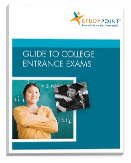
Our newsletter is designed to offer you grade- and season- specific information that will help you navigate and stay on top of the college admissions process. We need high school graduation year to provide you with timely, relevant information. You can unsubscribe at any time.

Request More Info
If you'd like to learn more about one of our programs or are ready to enroll your child in tutoring, please contact us. Our Enrollment Consultants are experts in their fields and would be happy to help with recommendations for tutoring programs, courses of study, standardized tests, and admissions support.
1-87STUDYPOINT
You have successfully requested more information.
Thank you for your interest in our programs!
You can expect one of our Enrollment Directors to be in touch within one business day.
If you have an urgent tutoring need, you can reach out to a member of our staff directly at 1-87STUDYPOINT (1-877-883-9764). We are certain we can be a resource for you and your family this school year, and we look forward to speaking with you!
—The StudyPoint Staff
Our Privacy Policy: we are a professional service and we take our clients' privacy seriously. None of this information will ever be shared or sold.
College Reality Check
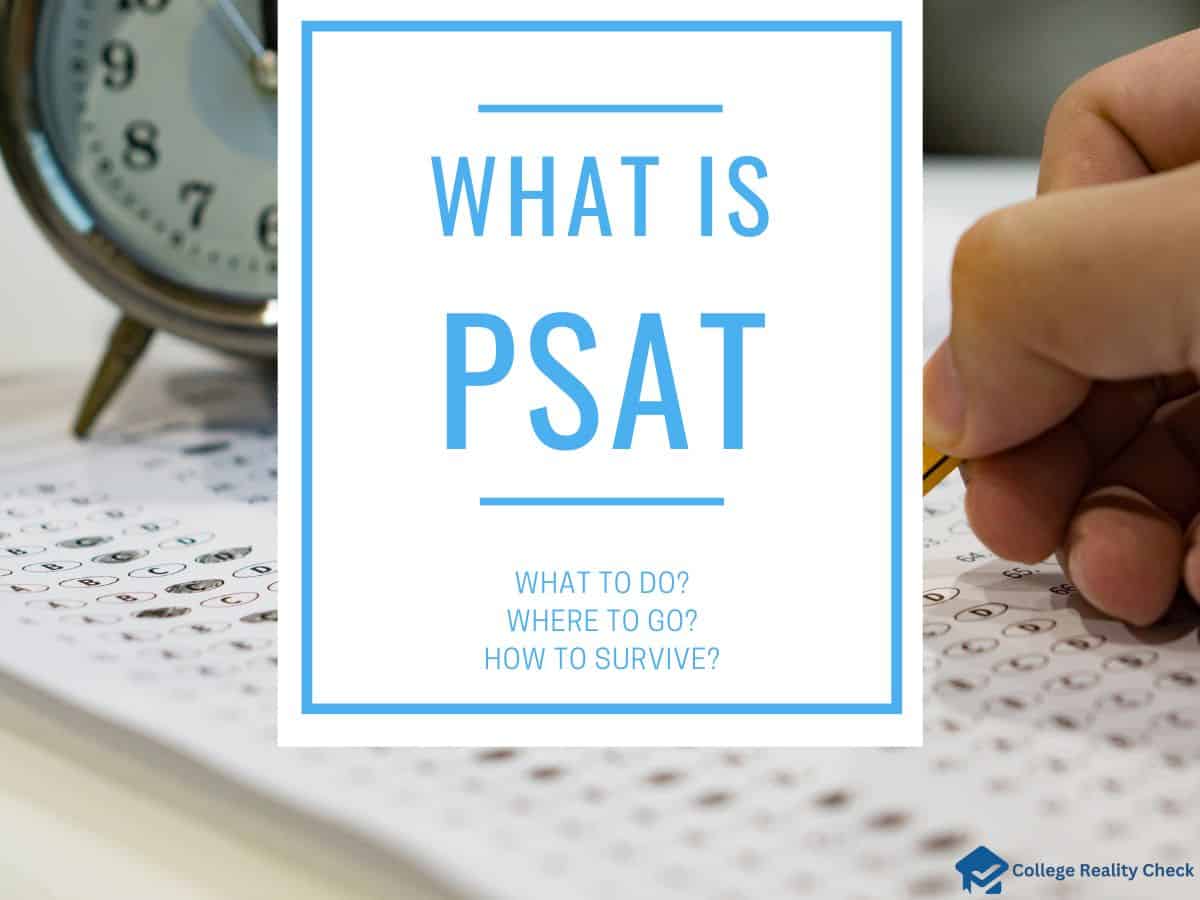
What is the PSAT? Practice Test Included
The PSAT stands for Preliminary Scholastic Aptitude Test. Administered by the College Board, it’s a standardized test that helps high school students prepare for a major college entrance exam and a prestigious merit-based scholarship.
Created as a practice test for high schoolers who are planning on taking the SAT, the PSAT helps boost college admissions chances by improving SAT performance. In addition, the PSAT serves as a qualifying exam for college-bound teens who are interested in winning the National Merit Scholarship Program.
This post contains some of the most essential things you need to know about the PSAT.
Is the PSAT Important for College Admissions?
The PSAT is not an important standardized test for college admissions. That’s because it’s not considered as one of those college admissions tests such as the SAT and ACT that test-required and test-optional institutions take into account in the admissions process. As a matter of fact, the College Board does not send PSAT scores to colleges.
While the PSAT won’t have a direct impact on your chances of getting an acceptance letter from your top-choice school, it can, however, determine your eligibility for the National Merit Scholarship.
Do You Have to Take the PSAT?
Some high schools require students to take the PSAT, and most of them take care of the registration fee, too. Otherwise, it’s completely up to the high schooler to decide whether or not they will sit for the PSAT.
However, being the PSAT/NMSQT, those who wish to apply for the National Merit Scholarship Program should take the standardized test in the 11th grade.
It may be a practice test for the SAT alright, but the PSAT is not a prerequisite for taking the SAT.
Read Also: 13 College Entrance Exams And When To Take Them
Can Colleges See How Many Times You Took the PSAT?
Colleges cannot see how many times applicants took the PSAT. Other than not being an important part of the college admissions process, the College Board does not send PSAT scores to institutions of higher education. Throughout their high school careers, teens can only take the PSAT, which is administered only once a year, up to 3 times.
For high schoolers who like to boost their chances of winning the National Merit Scholarship, taking the PSAT 1 or 2 times before their junior year may be done. It can also help increase their SAT scores and, ultimately, college admissions chances.
What is on the PSAT?
The components of the PSAT are the very same components of the SAT. After all, it serves as a practice test for the SAT. While it’s made up of 3 tests, there are only 2 primary sections of the PSAT: the Evidence-Based Reading & Writing (EWRB) and Math sections. However, unlike in the SAT, test-takers will encounter a few write-in questions, too, in the PSAT.
According to the PSAT website itself, some of the math questions will require you to write an answer instead of choosing it.
How Many Sections are on the PSAT?
The 2 main sections of the PSAT are the EWRB section and the Math section. The EBRW section is made up of Reading and Writing & Language. The Math section, on the other hand, consists of 2 sub-sections: the no-calculator section and the calculator-optional section. There is no optional Essay section on the PSAT, such as the case with the SAT in the past.
Even though the PSAT is a slightly shorter and slightly easier version of the SAT, therefore making it a practice test, both standardized tests are pretty much similar. And that is why the PSAT can help prepare you better for the SAT.
How Many Questions is the PSAT?
The PSAT has a total of 139 questions — the vast majority of them are multiple-choice questions, while a few of them, which are found in the Math section of the PSAT, are write-in questions. Of all the sections, the Math section has the most number of questions. The Writing & Language component of the EWRB section, meanwhile, has the least number of questions.
Here’s a table showing the number of questions each section of the PSAT has:
What Kind of Math is on the PSAT?
The Math section of the PSAT focuses on various areas of mathematics that play the biggest role in numerous academic majors and minors. The College Board refers to the various types of math included in the PSAT as Heart of Algebra, Problem Solving and Data Analysis, Passport to Advanced Math and Additional Topics in Math.
Below is a description of the math kinds you will encounter when sitting for the PSAT:
- Heart of Algebra – knowledge of linear equations and systems
- Problem Solving and Data Analysis – problem analysis and obtaining information from data
- Passport to Advanced Math – questions involving the manipulation of equations
- Additional Topics in Math – college-relevant geometry and trigonometry
Is There Science on the PSAT?
Even though there is no section on the PSAT that’s dedicated to science, some passages are science-related. For instance, the Reading portion of the EBRW section has either 1 or 2 science passages as well as a set of paired science passages, all of which contain a lot of technical terms and jargon that set them apart from other passages.
Both the PSAT and SAT do not have any science sections. On the other hand, the ACT has a science section, which makes it more appealing to some high school teens who consider science as their strength.
Is There Writing on the PSAT?
The PSAT has a Writing section, which is a part of the Writing & Language component of the EBRW section. The Writing section requires test-takers to read passages and then find mistakes and/or weaknesses and correct them. Despite the name, the Writing section contains multiple-choice questions and does not require students to write something.
An argument, informative or explanatory text, or a nonfiction narrative — these are the kinds of passages you will have to carefully read to answer the questions in the PSAT’s Writing section.
How Does the PSAT Work?
In this part of the post, we will discuss various things related to taking the PSAT, including how your test will be scored and what score you should get to impress colleges and qualify for the National Merit Scholarship.
What Does the PSAT Measure?
The PSAT is structured very similarly to the SAT, for which it serves as a practice test. It goes without saying that the PSAT is designed to measure the same things that the SAT is meant to measure. They are reading, writing and math skills that high school students learn in the classroom, all of which are necessary for college and career success.
Because the PSAT can be taken in as early as the 9th grade, the PSAT cannot necessarily determine a student’s college readiness. However, it can help ascertain whether or not a teen is on the right track through grade-level benchmarks.
Is the PSAT Multiple Choice?
Most of the questions on the PSAT are multiple-choice kinds, and each multiple-choice question is accompanied by 4 answer choices. While there are multiple-choice questions in the Math section of the PSAT, some of them require test-takers to write in their answers rather than select them. All in all, there are 8 write-in questions on the PSAT.
Questions where students have to provide their responses are also referred to as grid-in questions or simply grid-ins as they need to enter their answers in the grids found on the answer sheet.
Is the PSAT a Standardized Test?
The PSAT is a standardized test because it is given to high schoolers in a consistent or standard fashion. This means that all the questions on the test are all the same for all students no matter which high school they are attending.
Also making the PSAT a standardized type of examination is the fact that it’s scored the same for all those who take it.
Being the PSAT/NMSQT, the PSAT is also a standardized eligibility exam for the National Merit Scholarship.
When Do You Take the PSAT Test?
Most high school students take the PSAT in the 11th grade. Other than giving them practice for the SAT, it also enables them to be considered for the National Merit Scholarship Program.
However, the PSAT can also be taken during the freshman and sophomore years of high school, but it won’t serve as a qualifying exam for the National Merit Scholarship.
There is no use for any high schooler to take the PSAT in the 12th grade.
How to Guess on the PSAT
The right way to guess on the PSAT is to eliminate at least 1 incorrect answer among the answer choices, which gives the test-taker 1 in 3 chances of making the right guess. On the other hand, eliminating 2 incorrect answers among the answer choices makes it possible for the student taking the PSAT to get the right answer on a 50/50 basis.
Because there is no wrong-answer penalty on the PSAT, it’s generally a good idea for high schoolers who don’t know the answer to make a guess instead of leaving a question unanswered.
How Long is the PSAT?
It takes 2 hours and 45 minutes (with breaks) to complete taking the PSAT. Test-takers are given 70 minutes to complete the Math section, which has a total of 48 questions — 31 questions for the calculator-optional section and 17 questions for the no-calculator section.
Meanwhile, students have up to 95 minutes to complete the EBRW section, which has a total of 91 questions.
Here’s a table showing the breakdown of the PSAT’s testing time:
How Does PSAT Scoring Work?
Each section of the PSAT is scored on a scale of as low as 160 to as high as 760. The scores test-takers get in both sections of the standardized test are added, resulting in their PSAT composite score. So, in other words, the overall PSAT score can range anywhere from 320 to 1520, which may help predict the SAT composite scores of a test-taker.
There is no such thing as a failing score on the PSAT.
What is a Good PSAT Score?
Generally speaking, a good PSAT score is a composite score of 1070 or higher, which puts the high school student in the top 25% of all test-takers. An excellent score, which is between 1210 and 1520, puts the teen in the top 10% of all test-takers. For eligibility for the National Merit Scholarship Program, a student must be in the top 1% of all test-takers.
Other than increasing your chances of getting an SAT composite score that can help you get into your top-choice college, getting a high PSAT score can also make it possible for you to win the National Merit Scholarship.
Facts About the PSAT
Let’s talk about some important matters you need to know about the PSAT, including its beginnings, how many high school students take it every year and whether or not it comes with an optional Essay section.

History of the PSAT
The PSAT, like the SAT, was created by the College Board. It was in 1959 when the PSAT was administered for the very first time.
In 1971, the National Merit Scholarship Program, which is a US academic scholarship competition for recognition and university scholarships and is not related to the College Board, adopted the PSAT as its qualifying examination.
More than 30 years after the SAT came into being, the PSAT was administered to help high school students prepare for the SAT. In the past, some intellectual clubs used PSAT scores in admitting new members.
Who Created the PSAT?
It was the College Board that designed the PSAT, whose goal was to serve as a preliminary exam for the SAT. The non-profit organization decided to come up with the standardized test to provide high school students with the opportunity to prepare for the SAT and thus allow them to increase their chances of getting admitted to college.
Eventually, as mentioned earlier, it was used as a qualifying test for the National Merit Scholarship.
What is the College Board?
The College Board is an organization that designs and administers standardized tests as well as develops curricula for use by K-12 and institutions of higher education for the promotion of college readiness. The non-profit was established in 1900 by representatives of a total of 13 academic institutions at the University of Columbia.
Although it’s not an association of colleges, many postsecondary institutions are members of the College Board. As of this writing, there are more than 6,000 schools that are approved members.
How Many People Take the PSAT?
Around 3.5 million high school students take the PSAT. They consist of sophomore and junior high schoolers across the US. The College Board itself says that in the academic year 2021 to 2022, around 3.6 million students took the PSAT.
Meanwhile, over 1.5 million entrants for The National Merit Scholarship Program who meet other requirements take the PSAT.
More high schoolers take the SAT than the ACT. It’s therefore safe to assume that more students also take the PSAT than the PreACT, which is the counterpart of the PSAT.
What is the PSAT Designed to Predict?
The PSAT is designed to predict the SAT scores of high school students and, ultimately, their college readiness given that the SAT is primarily designed for such a purpose.
By taking the PSAT, test-takers know their strong points and, more importantly, their weak spots so that they can take the necessary steps to prepare for the SAT and get good scores.
Want to have an idea of how you may score on the SAT based on your PSAT scores? Online, you can easily access PSAT to SAT conversion tools and charts, most of which are free of charge.
Does the PSAT Have an Essay?
There is no Essay section of the PSAT. The standardized test has 2 main sections, the EBRW section and Math section, and nothing else. In the past, the SAT used to have an optional Essay section but the College Board decided to stop offering it altogether.
On the other hand, the PSAT never had an optional Essay section from the get-go.
Preparing for the Essay section on the SAT by means of an Essay section on the PSAT is completely pointless given that the said section of the SAT became optional in 2016 and unavailable in 2021.
Does the PSAT Provide Calculators?
The PSAT does not provide test-takers calculators. High school students who are sitting for the PSAT must bring their own approved calculators with them to their respective high schools, where the PSATs are administered. Similarly, test-takers are not allowed to share calculators and use them on the Math no-calculator portion and EBRW portion.
Here’s a list of all allowed calculator models from the College Board itself.
PSAT is Changing – Paper Based vs. Digital
The PSAT will be administered in digital format, and its paper and pencil format will cease to exist.
Since it was first taken by students preparing for the SAT back in 1959, it underwent 3 major changes in its format and content as well as how it’s scored. The said changes happened in 1997, 2005 and 2015.
In the fall of 2023, the PSAT will once again go through a significant change in that it will be administered in digital format.
The College Board chose the said date so that high school students who will be taking the digital SAT as juniors in the spring of 2024 will have the opportunity to experience what it’s like to take the standardized test in its entirely new format.
The National Merit Scholarship Program will still use the digital PSAT as its qualifying exam.
When Does the PSAT Go Digital?
As mentioned earlier, the PSAT will go digital in the fall of 2023. From that time onward, the paper and pencil format of the PSAT will no longer be made available by the College Board.
How to Study for the PSAT
According to the PSAT website itself, studying for the standardized test requires making a study plan, creating a realistic goal, taking practice tests and targeting areas that require improvement.
It’s a good thing that free PSAT test preps are available from the College Board and various sources, too.
Undergoing practice tests when preparing for the PSAT is an important step high school teeners should take. Not only will it allow them to become familiar with the PSAT exam experience but also enable them to determine areas that require more attention. This way, they can quit wasting time reviewing things they already know.
It’s recommended to start gearing up for the PSAT about 3 months before the test date. However, it’s a smart move to start preparing for it, which is administered every October of the year, at the start of the school year.
PSAT Practice Test
In this part of the post, I will give you a total of 10 sample PSAT questions — 5 of them are from the Writing & Language portion of the EWRB section, while the other 5 are from the Math section.
Let’s start with a short reading passage:
Vanishing Honeybees: A Threat to Global Agriculture
Honeybees play an important role in the agriculture industry by pollinating crops. An October 2006 study found that as much as one-third of global agriculture depends on animal pollination, including honeybee (12) pollination — to increase crop output. The importance of bees (13) highlights the potentially disastrous affects of an emerging, unexplained crisis: entire colonies of honeybees are dying off without warning.
(14) They know it as colony collapse disorder (CCD), this phenomenon will have a detrimental impact on global agriculture if its causes and solutions are not determined. Since the emergence of CCD around 2006, bee mortality rates have (15) exceeded 25 percent of the population each winter. There was one sign of hope: during the 2010–2012 winter seasons, bee mortality rates decreased slightly, and beekeepers speculated that the colonies would recover. Yet in the winter of 2012–2013, the (16) portion of the bee population lost fell nearly 10 percent in the United States, with a loss of 31 percent of the colonies that pollinate crops.
Q 4. Which choice offers the most accurate interpretation of the data in the chart?
Q 5. Which choice offers an accurate interpretation of the data in the chart?
Answer key:
The following, meanwhile, are 5 sample test questions for the PSAT’s Math portion:
1. A soda company is filling bottles of soda from a tank that contains 500 gallons of soda. At most, how many 20-ounce bottles can be filled from the tank? (1 gallon = 128 ounces)
2. A car traveled at an average speed of 80 miles per hour for 3 hours and consumed fuel at a rate of 34 miles per gallon. Approximately how many gallons of fuel did the car use for the entire 3-hour trip?
3. A high school basketball team won exactly 65 percent of the games it played during last season. Which of the following could be the total number of games the team played last season?
4. Janice puts a fence around her rectangular garden. The garden has a length that is 9 feet less than 3 times its width. What is the perimeter of Janice’s fence if the area of her garden is 5,670 square feet?
5. Tyra subscribes to an online gaming service that charges a monthly fee of $5.00 and $0.25 per hour for time spent playing premium games. Which of the following functions gives Tyra’s cost, in dollars, for a month in which she spends x hours playing premium games?
The sample questions above are from the following site: satsuite.collegeboard.org
Should I Take the PSAT?
In some instances, high schoolers have no choice but to take the PSAT, which costs $18, because the schools they are attending require it — most of the time, though, high schools take care of the registration cost.
Otherwise, it’s completely up to the students to decide whether or not to sit for the PSAT.
Taking the PSAT, however, comes with benefits. For instance, since it’s designed as a preliminary exam for the SAT, teens who undergo it can prepare much better for the SAT, thus allowing them to get good scores and increase their college admissions chances. High PSAT scores also allow high schoolers to qualify for the National Merit Scholarship Program.
Read Next: What is SAT?

Independent Education Consultant, Editor-in-chief. I have a graduate degree in Electrical Engineering and training in College Counseling. Member of American School Counselor Association (ASCA).
Similar Posts
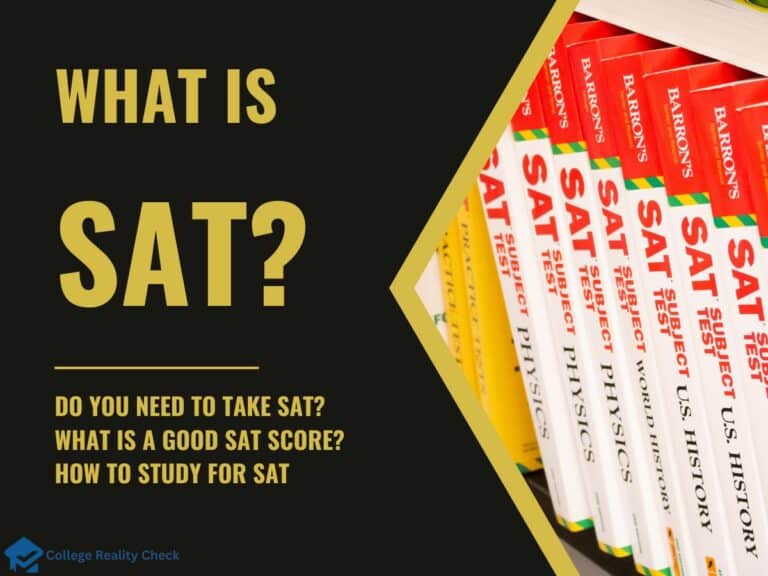
What is the SAT? Ultimate Guide for Top Students

Do You Need SAT to Transfer From Community College?
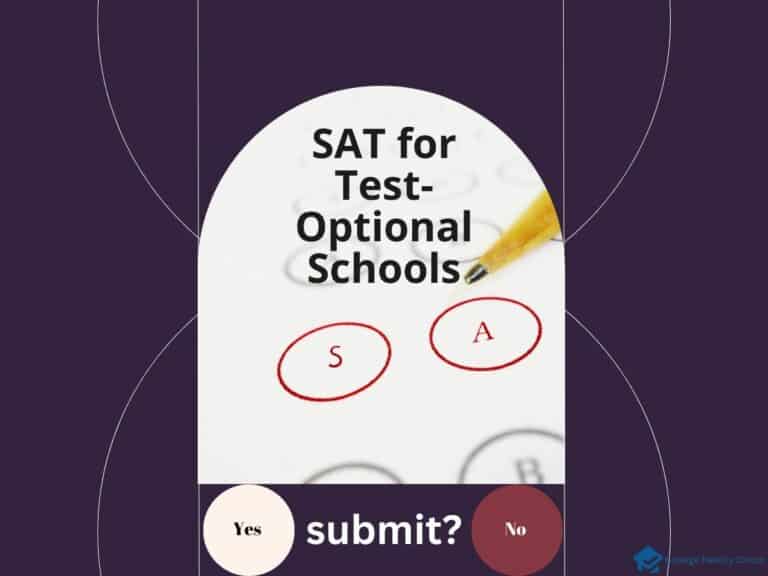
SAT for Test-Optional School: Who and When Should Submit
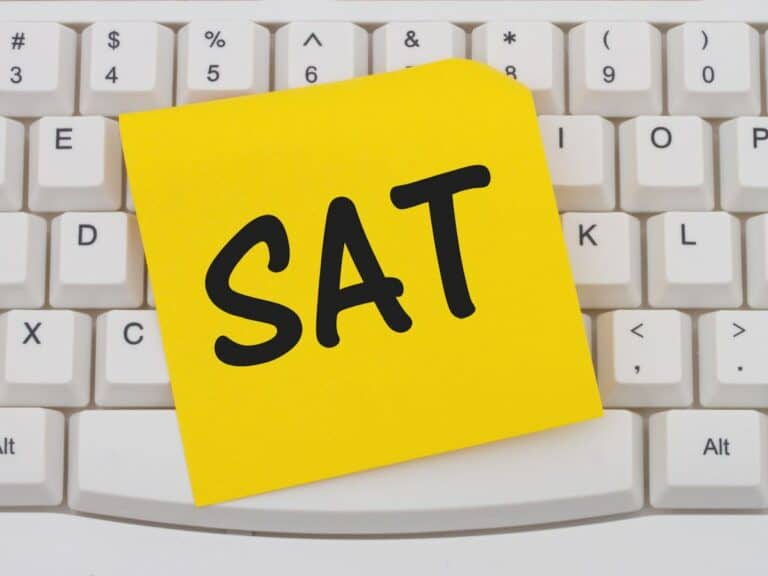
Getting Into College With High GPA But Low SAT
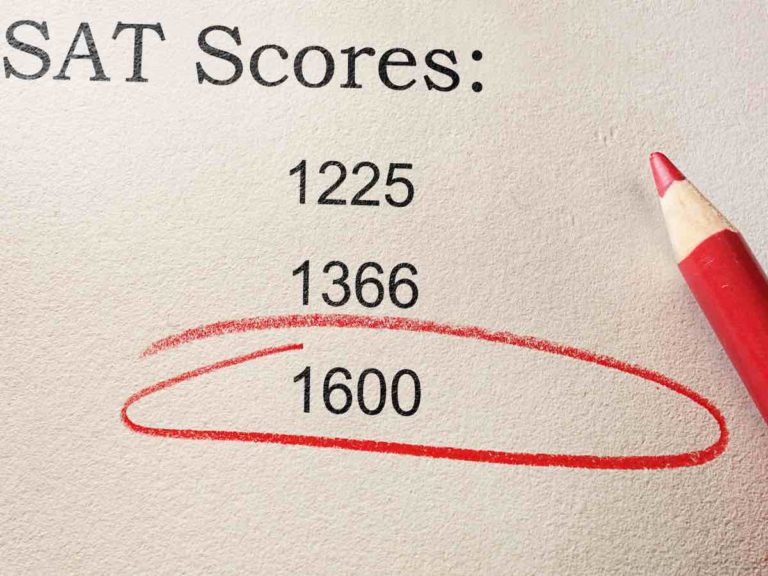
Crack the SAT: 16 Expert Hacks to Ace the Test in 2024
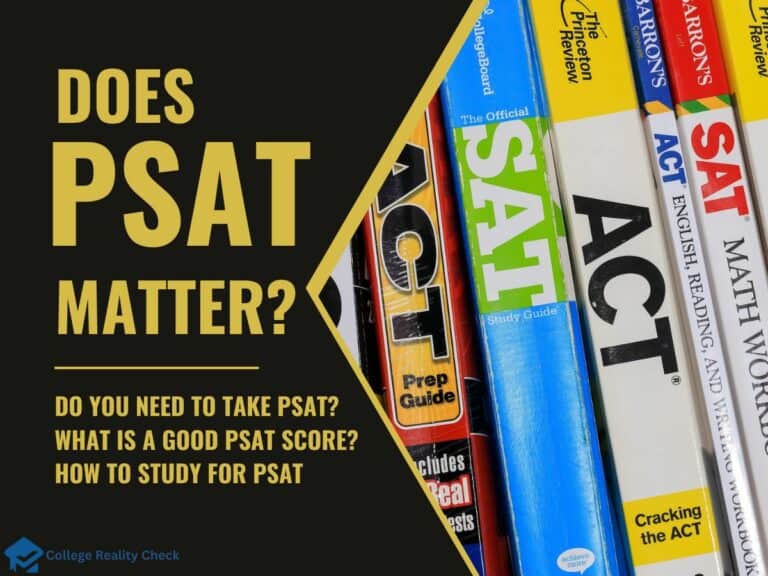
Does the PSAT Matter for College Admissions?
- Search All Scholarships
- Exclusive Scholarships
- Easy Scholarships to Apply For
- No Essay Scholarships
- Scholarships for HS Juniors
- Scholarships for HS Seniors
- Scholarships for College Students
- Scholarships for Grad Students
- Scholarships for Women
- Scholarships for Black Students
- Scholarships
- Student Loans
- College Admissions
- Financial Aid
- Scholarship Winners
- Scholarship Providers
Student-centric advice and objective recommendations
Higher education has never been more confusing or expensive. Our goal is to help you navigate the very big decisions related to higher ed with objective information and expert advice. Each piece of content on the site is original, based on extensive research, and reviewed by multiple editors, including a subject matter expert. This ensures that all of our content is up-to-date, useful, accurate, and thorough.
Our reviews and recommendations are based on extensive research, testing, and feedback. We may receive commission from links on our website, but that doesn’t affect our editors’ opinions. Our marketing partners don’t review, approve or endorse our editorial content. It’s accurate to the best of our knowledge when posted. You can find a complete list of our partners here .
What Is the PSAT?

Sawyer Hiton is a former scholarship and financial aid writer with Scholarships360. Previously, Sawyer worked with the nonprofit College Possible, supporting high school juniors in beginning their college plans and applications. Sawyer graduated from Kenyon College with a degree in Philosophy.
Learn about our editorial policies

Maria Geiger is Director of Content at Scholarships360. She is a former online educational technology instructor and adjunct writing instructor. In addition to education reform, Maria’s interests include viewpoint diversity, blended/flipped learning, digital communication, and integrating media/web tools into the curriculum to better facilitate student engagement. Maria earned both a B.A. and an M.A. in English Literature from Monmouth University, an M. Ed. in Education from Monmouth University, and a Virtual Online Teaching Certificate (VOLT) from the University of Pennsylvania.

PSAT stands for “Preliminary Scholastic Aptitude Test.” The PSAT is a test most sophomores and some juniors take to prepare for the SAT , a larger college readiness exam. But it can be more than just practice. If you do well on the PSAT you become eligible to earn scholarships. Doing well on the PSAT can also strengthen your college applications.
A little more about the PSAT
You can only take the PSAT once a year. Many high schools require their sophomores to take the test. For juniors, it is optional, but if you do well on the test this year you could qualify to receive a National Merit Scholarship . If you’re good at standardized tests, or just want some more SAT practice, it’s a great idea to take the PSAT your junior year .
Structure of the PSAT
The PSAT is 2 hours and 15 minutes long, and consists of a reading and writing section, as well as a math section. It recently switched to a digital format along with the SAT . Below is a breakdown of all the PSAT sections.
Reading and writing
The reading section of the PSAT tests your ability to read a passage, glean relevant information, and answer questions regarding evidence, words in context, and general analysis. Even if reading isn’t your best subject, you can still find a home in PSAT reading. The section is composed of literature, history, social science, and science passages, so you’re likely to resonate with at least one of the topics!
The writing section tests your ability to locate and correct grammatical errors. You’ll also be asked to revise words and phrases to better the text. Much of what shows up here you’ll have learned in English classes, or just through your daily conversations.
PSAT math is broken down into two sections, both involve multiple choice answers as well as write-in answers. Some questions are made up of two answers, where the first is used to discover the second.
How is the PSAT scored?
Each correct answer you get on the PSAT counts as one point towards your raw score. Points aren’t deducted if you get questions wrong, so use the process of elimination and guess away! Your raw score is converted to your scaled score and your composite score is the combination of each section’s scaled score. Composite scores range from 320-1520. On top of receiving your PSAT composite score, you’ll also receive:
- How you did in each section, as well as categories within those sections
- Your percentile ranks, which show how you did compared to other test takers
- College readiness benchmarks, which show you if you are or are not on track for college
Learn what you need to work on for your SAT
Perhaps more importantly than college readiness, your PSAT score report will reveal to you what you need to work on for your SAT. You’ll be able to access an online PSAT report in which you can see how you did on each question. This can be an incredibly helpful guide as you set forth to prepare for the SAT (or ACT) !
Read more: PSAT to SAT score conversion
What score do you need to qualify for the National Merit Scholarship?
The short answer is, a high one. PSAT scores are automatically sent to the National Merit Scholarship , where a select number of testers from each state are “semifinalists”. These end up being less than 1% of high school students, or in other words, the 99th percentile. Semifinalists then need to go through certain steps to apply for the actual scholarship. These include writing an essay, submitting an excellent transcript, and taking the SAT or ACT and receiving equally high scores. It isn’t easy to become a National Merit Scholar, but this scholarship is special because it’s one of the few you automatically qualify for!
Related: What is a high SAT Score?
What’s next in your PSAT journey?
Most high schools offer the PSAT in October . Talk to your counselor to learn the specific dates of your school. Sophomores are automatically signed up. If you want to take the test as a junior, you’ll have to sign yourself up. Your counselor will support you in doing this.
The PSAT can be a great opportunity to practice your standardized testing and receive detailed feedback. You might just qualify for a bundle of scholarship money in the process. Either way, it is nothing to fear, and everything to be eager for during this next phase of your college preparation!
Preparing for the SAT
Once you’ve taken the PSAT, you’ll have taken a great step towards preparing for the “real thing” – the SAT. You can use your PSAT results to fine-tune your studying and ensure that you are as prepared as possible. Examine the areas that you did well in and the areas where you have room for improvement. This will help you to discover how to improve!
Key Takeaways
- The PSAT is a test that students take to help prepare for the actual SAT
- Taking the PSAT can be a great way to identify what areas you may need to strengthen before taking the actual SAT
- While taking the PSAT and receiving a poor score won’t count against you, receiving a good score may work in your favor and nominate you for a National Merit Scholarship
- Don’t forget that you can prepare for the PSAT in many of the same ways that you prepare for the actual SAT
Start your scholarship search
- Vetted scholarships custom-matched to your profile
- Access exclusive scholarships only available to Scholarships360 members
Frequently asked questions about the PSAT
What does the psat test do, can i take the psat online, do colleges look at the psat, does the psat have an essay, scholarships360 recommended.

10 Tips for Successful College Applications

Coalition vs. Common App: What is the difference?

College Application Deadlines 2023-2024: What You Need to Know
Trending now.

How to Convert Your GPA to a 4.0 Scale

PSAT to SAT Score Conversion: Predict Your Score

What Are Public Ivy League Schools?
3 reasons to join scholarships360.
- Automatic entry to our $10,000 No-Essay Scholarship
- Personalized matching to thousands of vetted scholarships
- Quick apply for scholarships exclusive to our platform
By the way...Scholarships360 is 100% free!
ISBE has extended the deadline for all grant applications originally due June 30 to 5 p.m. July 5 due to the severe storm.
- {{item.ResourceLink.Description}}
RESOURCES
{{CurrentPage.Title}}
Beginning in spring 2019, ISBE began assessing all public-school students in grade 9 with the PSAT 8/9 and all public-school students in grade 10 with the PSAT 10, unless the student takes the grade 9 or 10 DLM-AA instead.
Transmissions from ISBE to College Board occur every Friday from 02/02/2024 - 04/19/2024
Please ensure that SIS enrollments are updated at all times.
Contact College Board Customer Support with questions at 844-688-9995.
News & Updates
- May 14, 2024, Weekly Message
- Tests Submitted March 18-29, 2024: Score Release Starts April 16, 2024
- Tests Submitted March 30-April 12, 2024: Score Release Starts April 30, 2024
- Tests Submitted April 13-26, 2024: Score Release Starts May 14, 2024
- Tests Submitted March 18-29, 2024: Score Release Starts April 18, 2024
- Tests Submitted March 30-April 12, 2024: Score Release Starts May 2, 2024
- Tests Submitted April 13-26, 2024: Score Release Starts May 16, 2024
- Required Training for Test Coordinators
- State Testing School Contact Update Form - Use this link to update testing staff for the ISBE-provided SAT with Essay, PSAT 10, and PSAT 8/9 for Spring 2024
- Spring 2024 Off-Site Testing Request (Due March 1, 2024)
- ISA (Illinois Science Assessment) Beginning in spring 2020, students in grade 11 will participate in the ISA in addition to the SAT. The SAT does not assess science. Note that grade 11 students for whom the DLM-AA is the appropriate test will participate in only the grade 11 DLM-AA in ELA, mathematics, and science.
2023-24 Manuals and Guides
Proctor script practice resource.
Proctors can use this document to learn what to expect when reading the script in Test Day Toolkit. This is intended as a practice resource only as the actual script in Test Day Toolkit is subject to change before test day.
Student Guides
Illinois has chosen not to provide access to Connections™ through College Board’s BigFuture School app. Students taking SAT with Essay and PSAT 10 may still provide a mobile phone number to access the BigFuture School app in order to receive their scores directly on their mobile phone.
Paper Administrations
Although rare, some students will participate in the spring 2024 SAT with Essay, PSAT 10, or PSAT 8/9 using a paper format. The resources below should be used exclusively for paper administrations. Hard copies of Paper Test Taker Administration Instructions will be shipped with their corresponding paper materials.
Paper Administration Guides
SAT, PSAT 10, and PSAT 8/9 Practice Resources
In spring 2024, students will use Bluebook™ , the College Board testing app, to take the test on Mac and Windows devices, iPads, and school-managed Chromebooks.
Students can practice for the digital exam in the following ways:
- Khan Academy – Students may use Khan Academy to access thousands of digital SAT Suite practice questions, videos, lessons, and hints plus test-taking tips and strategies. High quality content is available for every section of the test, including the essay, free of charge. A College Board account is not required to access Khan Academy digital SAT Suite practice content.
- Bluebook™ App – Students can take full length practice tests on the Bluebook app. Students can enter the Bluebook App by using their College Board account login. After students are registered in College Board's system by ISBE, they will also be able to use a sign-in ticket from their school. As of the most recent update of this document, essay practice is not yet available in the Bluebook app, but there are plans for its inclusion by this December.
Additional SAT Suite Practice Resources
- SAT Practice Tests (paper-and-pencil format included)
- PSAT 10 Practice Tests (paper-and-pencil format included)
- PSAT 8/9 Practice Tests (paper-and-pencil format included)
English Learner (EL) and Students with Disabilities Information
IMPORTANT: Supports for English Learners (ELs) and accommodations for students with disabilities are allowed for the ISBE-Provided SAT with Essay, PSAT 10, and PSAT 8/9 only for students with accommodations needs documented in an Individualized Education Program (IEP) or Section 504 Plan and for English Learners identified as such in ISBE’s Student Information System.
- Using Accommodations on Digital Tests – This College Board webpage contains a chart to describe how approved accommodations will be administered on digital tests.
- Parent Consent Form for Accommodation Requests (English and Spanish)
- Parent Consent Form for EL Supports Requests
- Accessing Services for Students with Disabilities (SSD) Online The SSD coordinator works with the test coordinator to administer assessments for students with accommodations. SSD coordinators must use SSD Online to request accommodations for students. To access the system, they must:
- Have a College Board professional account .
- Receive an access code to link their ; SSD Online account to their College Board professional account (first time only). It may take a day or two to receive the access code.
- Accommodations Requests The SSD coordinator must submit requests for all students taking the ISBE-provided PSAT 8/9, PSAT 10 and SAT. Most students already approved for school accommodations through an Individualized Education Program (IEP) or 504 Plan will be approved automatically.
- Testing with Accommodations If a student is approved for testing over two days, they should test on consecutive days. If the student is absent on the second day, they can continue when they return, as long as they complete testing no later than the final day of the testing window.
- Supports for EL Students College Board offers many supports for English learners (EL) including translated test directions, approved word-to-word dictionaries, and 50% extended time. Students using these supports will receive college and scholarship reportable scores.
- Translated Test Directions English learners taking the SAT Suite of Assessments during the school day will have access to translated test directions. In addition, schools may provide "on the fly" translations of directions, using a district- or school-approved translator for languages not provided by College Board. Links to translated test directions for the spring 2024 administration are available on the College Board Website.
- 50% Extended Time for English Learners Students are eligible for 50% Extended Time for the entire test. This support is offered as an option for EL students who receive extended time as an instructional support. The student's school will request this support via the EL Support request in the College Board's SSD Online portal.
Presentations & Webinars
- Illinois Assessment Update Webinars (under "Presentations and Webinars")
- Illinois Assessment Update Webinar Archive
- May 14, 15, and 16, 2024 College Board Webinar: Helping Students Understand Their Score Report and BigFuture The College Board is excited to provide an overview of the resources available to educators who support students in accessing and understanding SAT with Essay, PSAT 10, and PSAT 8/9 scores. The webinar will also provide an overview of how students can access and utilize College Board’s BigFuture college and career planning tools. Educators will be provided tools to access online SAT with Essay, PSAT 10, and PSAT 8/9 score reports and share best practices for how students and families can effectively utilize the data to understand and interpret scores. The webinar will also provide tips on viewing SAT with Essay score sends and leveraging fee waiver benefits, if applicable. Finally, College Board will share suggestions for how to help students use BigFuture to plan for college, pay for college, and explore careers.
- College Board Webinar: Helping Students Understand Their Score Report and BigFuture Recording
- February 20, 21, and 22, 2024 College Board Webinar: Accommodations and Supports Implementation Process Overview
- February 13, 14, and 15, 2024 College Board Webinar: How to Practice for the SAT with Essay, PSAT 10, and PSAT 8/9
- January 16-18 and 24-26, 2024: College Board in-person Workshops: Spring 2024 Digital Overview for Test Coordinators
- November 28, 29, and 30, 2023: College Board Webinars: Spring 2024 Digital Overview for SSD Coordinators
- November 28, 29, and 30, 2023: College Board Webinars: Spring 2024 Digital Overview for Technology Coordinators
- November 1, 2, and 7, 2023: College Board Webinars: Spring 2024 Digital Overview for Test Coordinators
- October 25, 2023: College Board Webinars: Spring 2024 Digital Overview for Administrators
SAT, PSAT 10 and PSAT 8/9 Toolkit Resources
performance level information.
PSAT & SAT Archived Information
* * * This page has been archived. The content on this page may no longer be in effect. * * *
Contact Information

Choose Your Test
Sat / act prep online guides and tips, should i take the sat essay how to decide.
New SAT , SAT Essay

The SAT underwent some major revisions in 2016, and one of the biggest changes is that its previously required essay is now optional. This can be confusing for some students and parents. Should you take the essay? Will colleges require the essay or not? Will taking the essay make your application stronger?
Read on for answers to all these questions. This guide will explain what the SAT essay is, what the pros and cons of taking it are, and how you can make the best choice for you.
UPDATE: SAT Essay No Longer Offered
(adsbygoogle = window.adsbygoogle || []).push({});.
In January 2021, the College Board announced that after June 2021, it would no longer offer the Essay portion of the SAT (except at schools who opt in during School Day Testing). It is now no longer possible to take the SAT Essay, unless your school is one of the small number who choose to offer it during SAT School Day Testing.
While most colleges had already made SAT Essay scores optional, this move by the College Board means no colleges now require the SAT Essay. It will also likely lead to additional college application changes such not looking at essay scores at all for the SAT or ACT, as well as potentially requiring additional writing samples for placement.
What does the end of the SAT Essay mean for your college applications? Check out our article on the College Board's SAT Essay decision for everything you need to know.
What Is the SAT Essay?
The SAT essay is one of the sections of the SAT. After being required since its inception, the College Board has now decided to make the essay optional. This is similar to the ACT, whose essay has always been optional.
During this section, students will be given 50 minutes to write an essay. The essay for the new SAT is very different than it was for the previous version of the SAT. You can read all about the changes to the SAT here , but, as a brief overview, the essay will give you a passage by an author who is taking a stance on an issue. Your job will be to analyze how the author built that argument.
If you choose to take the essay, it will be its own section of the SAT, and the score you get on the essay will be separate from your score on the rest of the exam. Your main SAT score will be out of 1600 while your essay will be graded across three different categories: Reading, Analysis, and Writing. For each area, your essay will be given a score from 2-8.
Below is a sample prompt from one of the official practice tests released by the College Board. Here you can read the entire prompt, including the passages you would need to analyze.

Do Colleges Require the SAT Essay Now That It's Optional?
So, the College Board has now made the essay an optional part of the SAT, but does that change how colleges view the essay (or if they even view it at all)? Kind of. Some schools that used the essays before no longer require them now that both the ACT and SAT have made the essays optional, but other schools continue to require the SAT essay.
Each school makes this decision individually, so there are no patterns to follow to try and guess who will require the essay and who won’t. Even top schools like the Ivy League are divided on whether to require the essay or not.
This can make things confusing if you’re applying to college soon and don’t know if you should take the SAT essay or not. The following sections of this guide will explain the benefits and drawbacks of taking the essay and walk you through different scenarios so you can make an informed decision.
The #1 Consideration: Do Any of the Schools You're Interested in Require the Essay?
The absolute most important factor, the factor that matters more than anything else in the rest of this guide, is if any of the schools you’re applying to or thinking of applying to require the SAT essay.
The best way to get this information is to Google “[school name] SAT essay requirement,” look directly on each school’s admission webpage, or check out our list of the schools that require the SAT essay.
Find this information for every school you plan on applying to, even schools you’re not sure you want to apply to, but are considering. If even one school you’re interested in requires the SAT essay, then you should take it, regardless of any other factors. There is no way to take just the SAT essay by itself, so if you take the SAT without the essay and then, later on, realize you need an essay score for a school you’re applying to, you will have to retake the entire test.
So, if a school you’re interested in requires the SAT essay, your choice is clear: take the essay when you take the SAT. However, what if the schools you’re interested in don’t require the essay? If that’s the case, you have some other factors to consider. Read on!
Benefits of Taking the SAT Essay
If none of the schools you’re thinking of applying to require the SAT essay, why would you want to take it? The two main reasons are explained below.
#1: You're Covered for All Schools
Taking the SAT essay means that, no matter which schools you end up applying to, you will absolutely have all their SAT requirements met. If you decide to apply to a new school that requires the SAT essay, that won’t be a problem because you’ll already have taken it.
If you already are absolutely certain about which schools you’re applying to and none of them require the essay, then this may not be a big deal to you. However, if you have a tentative list of schools, and you’ve been adding a school or removing a school from that list occasionally, you may want to be better safe than sorry and take the SAT essay, just in case.

Taking the SAT essay means you have all your bases covered, no matter which schools you end up applying to.
#2: A Good Score May Boost Your Application Slightly
While it’s highly unlikely that your SAT essay will be the deciding factor of your college application, there are some cases where it can give you a small leg up on the competition. This is the case if a school recommends, but doesn’t require the essay, and that school is particularly competitive.
Having a strong SAT essay score to submit may strengthen your application a bit, especially if you are trying to show strong English/writing skills.
Ready to go beyond just reading about the SAT? Then you'll love the free five-day trial for our SAT Complete Prep program . Designed and written by PrepScholar SAT experts , our SAT program customizes to your skill level in over 40 subskills so that you can focus your studying on what will get you the biggest score gains.
Click on the button below to try it out!

Drawbacks to Taking the SAT Essay
There are also costs to taking the SAT essay; here are three of the most common:
#1: It's Another Section to Study For
If you choose to take the essay, that means you have an entire extra SAT section to study and prepare for. If you already feel like you have a ton of SAT prep to do or have doubts about staying motivated, adding on more work can make you feel stressed and end up hurting your scores in the other SAT sections.
#2: It Makes the Exam Longer
Taking the essay will, obviously, increase the total time you spend taking the SAT. You’re given 50 minutes to write the essay, and, including time needed for students not taking the essay to leave and things to get settled, that will add about an hour to the test, increasing your total SAT test time from about three hours to four hours.
If you struggle with keeping focused or staying on your A game during long exams (and, let’s be honest, it’s not hard to lose concentration after several hours of answering SAT questions), adding an additional hour of test time can reduce your test-taking endurance and make you feel tired and distracted during the essay, likely making it hard for you to get your best score.
#3: The Essay Costs Extra
Taking the SAT with the essay will also cost you a bit more money. Taking the SAT without the essay costs $46, but if you choose to take the essay, it costs $14 extra, raising the total cost of the SAT to $60.
However, if you're eligible for an SAT fee waiver, the waiver also applies to this section of the exam, so you still won't have to pay anything if you choose to take the essay.

Taking the essay likely means the cost of taking the SAT will be slightly higher for you.
Should You Take the SAT Essay? Five Scenarios to Help You Decide
Now you know what the SAT essay is and the pros and cons of taking it. So, what should you decide? Five scenarios are listed below; find the one that applies to your situation and follow the advice in order to make the best decision for you.
Scenario 1: You're planning on applying to at least one school that requires the essay
As mentioned above, if even one school you’re thinking about applying to requires the SAT essay, you should take it in order to avoid retaking the entire SAT again at a later date because you need an essay score.
Scenario 2: None of the schools you're applying to look at essay scores
If none of the schools you’re thinking about applying to even look at SAT essay scores, then you shouldn’t take it. Even if you get a perfect score, if the schools don’t consider essay scores, then taking it will have no benefits for you.
Scenario 3: The schools you're applying to don't require the SAT essay and aren't highly competitive
In this case, you don’t need to take the SAT essay, unless you’re trying to make up for weak writing skills in other parts of your application.
Scenario 4: The schools you're applying to recommend the SAT essay and are more competitive
For this scenario, you should take the SAT essay in order to give your application an extra boost, unless you really think you’d perform poorly or preparing for and taking the essay would cause your scores in other sections to decline.
Scenario 5: You aren't sure where you're going to apply yet
If you’re not sure which schools you want to apply to, then you should take the SAT essay, just to be safe. This way you’re covered no matter where you end up applying to college.

If the thought of figuring out which colleges to apply to has you as confused as this blue panda, your safest option is to take the SAT essay.
Because of the College Board’s recent decision to make the SAT essay optional, students are now faced with the decision of whether they should take it or not. The best way to decide is to learn the essay policy for each of the colleges you're interested in applying to. Some schools will still require the essay, some won’t even look at an applicant’s essay scores, and other schools don’t require the essay but will look at your score if you do take it.
Use these school policies to help decide whether you should take the essay. Remember, if you end up needing to submit an essay score, you will have to retake the entire SAT, so make sure you have accurate and up-to-date information for each school you are thinking of applying to.
What's Next?
Have you decided to take the essay and want to know how to start studying? We have a step-by-step guide that explains how to write a great SAT essay.
Want more examples of sample prompts? Here are all of the real SAT essay prompts that have been released by the College Board.
Are you aiming for a perfect SAT essay score? Check out our guide on how to get a perfect 8/8/8 on the SAT essay.
Want to improve your SAT score by 160 points? We've written a guide about the top 5 strategies you must be using to have a shot at improving your score. Download it for free now:

Christine graduated from Michigan State University with degrees in Environmental Biology and Geography and received her Master's from Duke University. In high school she scored in the 99th percentile on the SAT and was named a National Merit Finalist. She has taught English and biology in several countries.
Ask a Question Below
Have any questions about this article or other topics? Ask below and we'll reply!
Improve With Our Famous Guides
- For All Students
The 5 Strategies You Must Be Using to Improve 160+ SAT Points
How to Get a Perfect 1600, by a Perfect Scorer
Series: How to Get 800 on Each SAT Section:
Score 800 on SAT Math
Score 800 on SAT Reading
Score 800 on SAT Writing
Series: How to Get to 600 on Each SAT Section:
Score 600 on SAT Math
Score 600 on SAT Reading
Score 600 on SAT Writing
Free Complete Official SAT Practice Tests
What SAT Target Score Should You Be Aiming For?
15 Strategies to Improve Your SAT Essay
The 5 Strategies You Must Be Using to Improve 4+ ACT Points
How to Get a Perfect 36 ACT, by a Perfect Scorer
Series: How to Get 36 on Each ACT Section:
36 on ACT English
36 on ACT Math
36 on ACT Reading
36 on ACT Science
Series: How to Get to 24 on Each ACT Section:
24 on ACT English
24 on ACT Math
24 on ACT Reading
24 on ACT Science
What ACT target score should you be aiming for?
ACT Vocabulary You Must Know
ACT Writing: 15 Tips to Raise Your Essay Score
How to Get Into Harvard and the Ivy League
How to Get a Perfect 4.0 GPA
How to Write an Amazing College Essay
What Exactly Are Colleges Looking For?
Is the ACT easier than the SAT? A Comprehensive Guide
Should you retake your SAT or ACT?
When should you take the SAT or ACT?
Stay Informed
Get the latest articles and test prep tips!
Looking for Graduate School Test Prep?
Check out our top-rated graduate blogs here:
GRE Online Prep Blog
GMAT Online Prep Blog
TOEFL Online Prep Blog
Holly R. "I am absolutely overjoyed and cannot thank you enough for helping me!”
US South Carolina
Recently viewed courses
Recently viewed.
Find Your Dream School
This site uses various technologies, as described in our Privacy Policy, for personalization, measuring website use/performance, and targeted advertising, which may include storing and sharing information about your site visit with third parties. By continuing to use this website you consent to our Privacy Policy and Terms of Use .
COVID-19 Update: To help students through this crisis, The Princeton Review will continue our "Enroll with Confidence" refund policies. For full details, please click here.
- Homework Help
- Find a Tutor
- How It Works
- Pre-Med GPA Booster
- Need a test prep tutor? Call us: 888-231-7737

What do you want to work on?
About ayan a..
Essay Writing
Biochemical Engineering Major from Ohio State University-Main Campus
I Love Tutoring Because
I enjoy helping people learn while also learning myself. We all have places we can improve upon, and to help others do so is a big honor.
Other Interests
Art collecting, Gaming
Reviews (1)
Async - English - General (7-12) Essay Writing

Want to get into a great college? Your GPA matters!
The Princeton Review now has tutors online across 40 subjects who can help you 24/7.
We GUARANTEE Better Grades.
Enrollment Advisor
1-800-2REVIEW (800-273-8439) ext. 1
1-877-LEARN-30
Mon-Fri 9AM-10PM ET
Sat-Sun 9AM-8PM ET
Student Support
1-800-2REVIEW (800-273-8439) ext. 2
Mon-Fri 9AM-9PM ET
Sat-Sun 8:30AM-5PM ET
Partnerships
- Teach or Tutor for Us
College Readiness
International
Advertising
Affiliate/Other
- Enrollment Terms & Conditions
- Accessibility
- Cigna Medical Transparency in Coverage
Register Book
Local Offices: Mon-Fri 9AM-6PM
- SAT Subject Tests
Academic Subjects
- Social Studies
Find the Right College
- College Rankings
- College Advice
- Applying to College
- Financial Aid
School & District Partnerships
- Professional Development
- Advice Articles
- Private Tutoring
- Mobile Apps
- Local Offices
- International Offices
- Work for Us
- Affiliate Program
- Partner with Us
- Advertise with Us
- International Partnerships
- Our Guarantees
- Accessibility – Canada
Privacy Policy | CA Privacy Notice | Do Not Sell or Share My Personal Information | Your Opt-Out Rights | Terms of Use | Site Map
©2024 TPR Education IP Holdings, LLC. All Rights Reserved. The Princeton Review is not affiliated with Princeton University
TPR Education, LLC (doing business as “The Princeton Review”) is controlled by Primavera Holdings Limited, a firm owned by Chinese nationals with a principal place of business in Hong Kong, China.

IMAGES
VIDEO
COMMENTS
However, since the PSAT does not include an essay component, there are no specific scoring or tips related to essays. Taking the PSAT/NMSQT. The PSAT/NMSQT is an important exam students typically take in 11th grade, although some schools may offer it to 10th graders. It is administered at schools during October and provides students with ...
The Math Section. Review what's included on the Math Section so you can prepare for test day. The Math Test: Overview. Calculator Use. Was this page helpful? Yes. No. Top. The PSAT/NMSQT includes a Reading and Writing Section and a Math Section.
Scores range from 320 to 1520 and are on the same score scale as the SAT. This means that a score of 1100 on the PSAT/NMSQT is equivalent to a score of 1100 on the SAT. The only difference is that SAT scores range from 400 to 1600, because the difficulty level of the questions is higher than on the PSAT/NMSQT. Students also receive a PSAT/NMSQT ...
PSAT Sections. Just like the SAT, the PSAT includes two sections—Evidence-Based Reading & Writing and Math—comprised of three tests: Reading, Writing & Language, and Math. There is no Essay. Here's what you can expect on each test section.
The Reading and Writing Section: Overview. The Reading and Writing section includes 54 questions evenly divided between 2 modules. You have 32 minutes to answer the questions in each module (~1 minute and 11 seconds per question). To help you budget your time, questions that test similar skills and knowledge are grouped together and arranged ...
The two tests are extremely similar; the main difference is that the PSAT doesn't have an optional essay section. ... you can think of the Writing section as containing two main types of questions—those that have to do with little picture changes, like grammar and punctuation, and those that ask about big picture changes, ...
As it stands, the PSAT is heavily connected to the SAT. One of the test's primary purposes is to act as a precursor to the SAT—as the name suggests, as an SAT practice test. Thus, the PSAT and SAT heavily mirror each other in regard to content, structure, and even scoring. But the two tests aren't identical.
No, the PSAT does not have an essay component. It consists only of multiple-choice sections, including Reading, Writing and Language, and Math. Don't worry about preparing for any written essays for the PSAT. Focus your studies on the areas mentioned, practice with sample questions, and make sure you're comfortable with the test format.
Before Test Day. Content on the PSAT/NMSQT is very similar to the SAT, with Reading and Writing and Math sections. To prepare, full-length adaptive digital PSAT/NMSQT practice is available on the Bluebook™ app. More resources are available at the Official Digital SAT Prep on Khan Academy.
On the PSAT, you'll work through four sections of the test. These four sections are: Reading Test 📚. Writing and Language Test 📝. Math Test - Calculator 🧮. Math Test - No Calculator . After working through the hour-long reading test, you'll start thinking 🤔 like a writer while taking on the 35 minute writing and language section!
The PSAT Math Test: What to Expect. The PSAT Math section includes 44 questions divided between two modules. You have 35 minutes to answer the questions in each module. The PSAT math section tests your ability in four content areas: algebra, advanced math, problem-solving and data analysis, and geometry and trigonometry.
The PSAT 8/9 tests the same skills and knowledge as the PSAT 10 but in a way that's appropriate for eighth and ninth graders. Do students have to write an essay on the PSAT 10? No, the PSAT 10 does not have an essay. Can homeschooled students take the PSAT 10? Yes. Homeschooled students can contact a local school and arrange to take the PSAT 10 ...
The Digital PSAT is a great primer for the Digital SAT, and even the ACT, but it's more than just a trial run. Digital PSAT scores are used to identify National Merit Scholars and award merit scholarships. More than 3.4 million high school students (mostly juniors and sophomores) take this nationwide, multiple-choice test every year.
PSAT Writing and Language - An Overview of the PSAT Writing and Language Section. The PSAT Writing section consists of a total of 44 multiple-choice questions to be answered in 35 minutes. The Writing section asks you to read passages, find mistakes and/or weaknesses, and fix them. Below you can find more detailed information about the specific ...
Does the PSAT Have an Essay? There is no Essay section of the PSAT. The standardized test has 2 main sections, the EBRW section and Math section, and nothing else. In the past, the SAT used to have an optional Essay section but the College Board decided to stop offering it altogether. On the other hand, the PSAT never had an optional Essay ...
PSAT stands for "Preliminary Scholastic Aptitude Test.". The PSAT is a test most sophomores and some juniors take to prepare for the SAT, a larger college readiness exam. But it can be more than just practice. If you do well on the PSAT you become eligible to earn scholarships. Doing well on the PSAT can also strengthen your college ...
That's right: the PSAT has no essay. The SAT, on the other hand, does. It's optional, so you don't have to take it. But as your colleges might require or recommend it, you should be aware that this is one aspect of the SAT that the PSAT won't prepare you for. As a result, make sure you give the essay some attention before you dive into the SAT.
Beginning in spring 2024, SAT with Essay, PSAT 10, and PSAT 8/9 will transition to all digital test administration.More information is available in this digital testing overview and under the "Presentations & Webinars" section of this webpage. Beginning in spring 2019, ISBE began assessing all public-school students in grade 9 with the PSAT 8/9 and all public-school students in grade 10 ...
The SAT puts your achievements into context. That means it shows off your qualifications to colleges and helps you stand out. Most colleges—including those that are test optional—still accept SAT scores. Together with high school grades, the SAT can show your potential to succeed in college or career. Learn more about why you should take ...
No. Students do not need to write an essay on the PSAT 10. Help Center: Students; Help Center: Professionals and Educators; Help Center: K-12 Reporting Portal
Taking the SAT with the essay will also cost you a bit more money. Taking the SAT without the essay costs $46, but if you choose to take the essay, it costs $14 extra, raising the total cost of the SAT to $60. However, if you're eligible for an SAT fee waiver, the waiver also applies to this section of the exam, so you still won't have to pay ...
About Ayan A. Subjects. Essay Writing. Education. Biochemical Engineering Major from Ohio State University-Main Campus. I Love Tutoring Because. I enjoy helping people learn while also learning myself. We all have places we can improve upon, and to help others do so is a big honor. Other Interests.
Scholarships and Recognition. College Board can help connect students like you to funding to help pay for college. Scholarship Partners. Take the PSAT 10 to measure readiness for college, access scholarships, and practice for the SAT.
No, the PSAT/NMSQT does not have an essay. Help Center: Students; Help Center: Professionals and Educators; Help Center: K-12 Reporting Portal
Pen or pencil for scratch work (does not have to be a No. 2 pencil). ... Where available, students who take the PSAT/NMSQT, PSAT 10, or the SAT during the school day can opt-in to Connections. You can't opt-in to Connections as part of this SAT Weekend test, but if you have already opted-in to Connections or if you opt-in later, your SAT ...